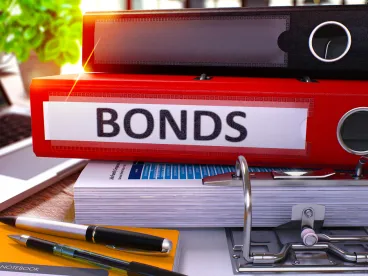As described in our previous post, NABL hasn’t been binge watching Tiger King and binge eating like the rest of us during this time at home during the COVID-19 pandemic. Instead, on March 25, 2020, NABL asked the IRS to adopt a proposed notice that would address two municipal bond concerns caused by the pandemic: (1) the requirement of in-person TEFRA hearings for tax-exempt private activity bonds; and (2) the extinguishment of qualified tender bonds and commercial paper if the issuer of such debt repurchases it without meeting certain requirements.
The IRS responded on Star Wars Day[1] with Rev. Proc. 2020-21 and Notice 2020-25, which should help alleviate these two concerns through the end of 2020.
Rev. Proc. 2020-21 allows TEFRA hearings to be conducted via phone.
Before issuing tax-exempt private activity bonds, there must be a public hearing, where individuals can voice their opinions or concerns regarding the issuance of such bonds for the project to be financed. This requirement originated under the Tax Equity and Financial Responsibility Act of 1982, so the industry term for this requirement is “TEFRA.” The 2018 final TEFRA regulations require that this public hearing be held in a location that, based on the facts and circumstances, is convenient for the residents of the governmental unit that is approving the bond issue. In promulgating the 2018 final TEFRA regulations, the Treasury Department explicitly rejected a request to allow phone or web-based hearings without an in-person component to satisfy the requirement that the public hearing be held in a convenient location for the governmental unit’s residents.
The COVID-19 pandemic has frustrated almost all efforts to satisfy this TEFRA requirement. A significant portion of the United States population is required to stay home[2] under state or local government orders issued in response to the pandemic, and most state and local government workers, who would preside over a TEFRA hearing, are required to telework. These circumstances raised questions regarding whether an in-person public hearing would satisfy the TEFRA requirement that the hearing be held in a convenient location if a stay-at-home order prevents the public from attending.
Revenue Procedure 2020-21 resolves the quandary by allowing telephonic TEFRA hearings during the period between May 4, 2020 and December 31, 2020. Specifically, during this period, a governmental unit can meet the TEFRA requirement that the public hearing be held in a convenient location by affording the general public access to the hearing by toll-free telephone call. The governmental unit may also provide access to the TEFRA hearing through other phone numbers and/or internet-based meeting technology, but it is not required to do so. A governmental unit that, in response to the COVID-19 pandemic, held a telephonic TEFRA hearing before May 4, 2020 can apply Revenue Procedure 2020-21 retroactively to treat that hearing as having been held in a location that was convenient for its residents. Otherwise, Revenue Procedure 2020-21 makes no changes to the TEFRA notice, hearing, and approval requirements contained in Treasury Regulation § 1.147(f)-1.
Finally, Revenue Procedure 2020-21 sets forth a supplemental public notice procedure solely for a TEFRA hearing for which public notice that meets the requirements of Treasury Regulation § 1.147(f)-1(d)(4) was published on or before May 11, 2020. Such a public notice will continue to meet the requirements of Treasury Regulation § 1.147(f)-1(d)(4) if: (1) the hearing is held by teleconference accessible to residents of the governmental unit by calling a toll-free telephone number; and (2) the toll-free telephone number is published at least 48 hours prior to the hearing in a governmental website posting that satisfies the requirements of Treasury Regulation § 1.147(f)-1(d)(4)(iii).
Notice 2020-25 helps issuers repurchase their qualified tender bonds and tax-exempt commercial paper without extinguishment, even if the issuer does not use its best efforts to remarket the debt.
Reminiscent of the great recession of 2008, the pandemic has caused wild fluctuations in the global financial markets, including the municipal bond market. Recent interest rate resets on variable rate debt have been substantially higher than issuer expectations and market patterns over the past few years (although the Fed purchasing municipal debt as part of an economic stabilization method has somewhat reduced this). In order to avoid these high reset rates, some issuers have employed a strategy of purchasing their own variable rate debt and holding it. However, this strategy comes with its own set of problems. Specifically, the repurchased debt is considered “extinguished” for tax purposes once the issuer acquires it (except to the extent that Notice 2008-41, discussed below, applies). Once extinguished, the debt can almost never be reconstituted (reignited?) as tax-exempt debt.
Under Notice 2008-41, released in response to the events of the great recession of 2008 but of continuing effect today, if an issuer repurchases its own “qualified tender bonds” (as defined in Notice 2008-41), and uses “best efforts” to remarket such debt within 90 days, such variable rate debt is not extinguished for tax purposes if the issuer in fact remarkets the bonds within 90 days after purchasing them. Unlike in 2008, where market disruptions in some cases left issuers with no buyers for their debt at any price, issuers may be able to remarket their bonds in the current market, but only at rates that are too high to stomach.
Notice 2020-25 addresses these concerns by allowing issuers to buy and hold their own qualified tender bonds and also their “tax-exempt commercial paper” through the end of 2020 and suspending the requirement that the issuer must use “best efforts” to remarket such obligations to avoid extinguishment. The relief applies to issuers who purchase their own qualified tender bonds or tax-exempt commercial paper during calendar year 2020, and it is retroactive to the beginning of 2020 for all you daredevils out there.
Additionally, if an issuer purchases its own qualified tender bonds or tax-exempt commercial paper and holds it beyond December 31, 2020, Notice 2020-25 provides that the issuer can hold the debt for 180 days (rather than 90 days, as under current law) from the date of purchase without triggering an extinguishment, although after December 31, 2020, the issuer must use its best efforts to remarket the debt to avoid an extinguishment prior to the end of the 180-day period.
The Notice also provides an additional ancillary benefit that is worth mentioning. One of the ramifications of the extinguishment of an issue of tax-exempt bonds is that such extinguishment also causes the deemed termination of any swap that is integrated with the bonds. Notice 2020-25 makes clear that this will not apply to any issuer purchase covered by that Notice. Specifically, if there is a “qualified hedge,” as defined in Treasury Regulation § 1.148-4(h), for the qualified tender bonds or commercial paper that the issuer of such debt purchases during 2020, the qualified hedge is not deemed terminated where the issuer’s acquisition and holding of the hedged bonds accords with Notice 2020-25.
With this first, urgent item out of the way, Congress and Treasury should now take up NABL’s additional requests to expand mechanisms for state and local governments to efficiently borrow to provide crucial infrastructure, improve demand for obligations to reduce borrowing costs, and assist state and local governments in efficiently responding to the challenges presented by COVID-19. More on those requests and how you can help here.
[1] May the Fourth. And may the Force be with us. Seriously, COVID-19 might be the dark side.
[2] Unless members of the population work for an “Essential Business” as defined in the applicable order or need fresh air as much as the author of this post does.




 />i
/>i
